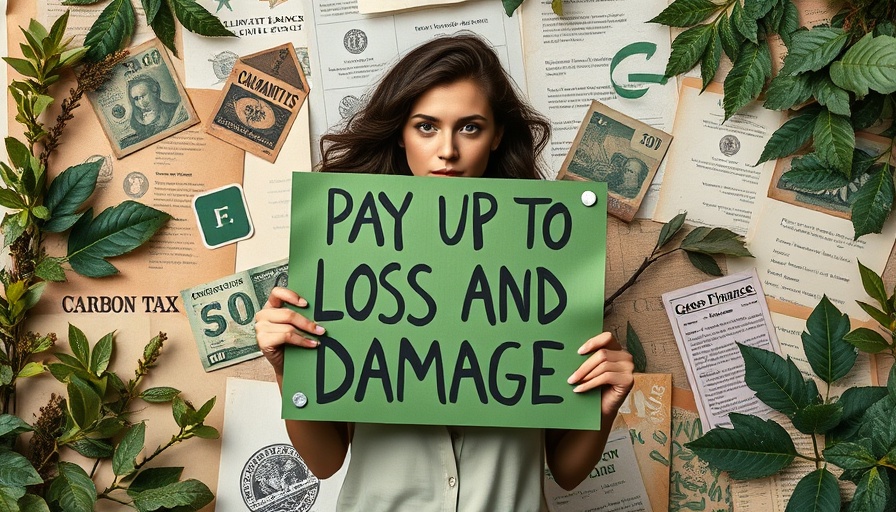
Understanding Climate Finance: A New Frontier in Sustainable Fashion
As we move deeper into the 21st century, the intersection of fashion and environmental sustainability is becoming increasingly critical. Climate finance is an essential component in this evolving dialogue, particularly as it serves as a lifeline for the fashion industry in its efforts to combat climate change. For many, the term 'climate finance' can seem daunting and obscure, especially when juxtaposed with the immediate and visible changes demanded by consumers. However, understanding climate finance is crucial for anyone involved in fashion—whether as a consumer, a designer, or a brand owner—because it supports the fundamental changes needed within supply chains.
Why Does Climate Finance Matter in Fashion?
The fashion industry is notorious for its environmental impact, contributing significantly to pollution and waste. But climate finance offers solutions. It enables the funding necessary for projects that aim to reduce carbon emissions across supply chains. Imagine a world where every garment you buy has been produced with methodologies designed to minimize environmental harm—this is where climate finance comes into play. It helps finance critical initiatives like decarbonisation and sustainable sourcing, effectively leading us toward a more sustainable and responsible fashion landscape.
Going Beyond Technical Jargon: Key Terms in Climate Finance
Understanding the language of climate finance is the first step toward meaningful engagement. For instance, blue bonds are a new tool addressing ocean conservation, designed to safeguard marine ecosystems—equally important to the health of our planet as terrestrial initiatives. Similarly, the carbon border adjustment mechanism is poised to change how we produce and price carbon in fashion. By implementing a carbon price on imported goods, the hope is to prevent companies from relocating to countries with lax carbon regulations—a practice known as 'carbon leakage.' These initiatives not only pave the way for better practices but can also directly affect consumer prices.
The Intersection of Fashion and Climate Initiatives
Consumers today are more informed than ever and are increasingly choosing brands that prioritize sustainability. As environmental consciousness grows, so does the market for sustainable fashion options. Brands responding to this shift towards more sustainable practices often rely on climate finance to make essential changes. From sourcing materials sustainably to adopting carbon-neutral shipping practices, financial initiatives can help companies realize their commitments to sustainability.
Future Trends: What Lies Ahead?
The upcoming United Nations Climate Change Conference (COP30) this November is set to be pivotal. Expect climate finance to take center stage in discussions, which will likely lead to more rigorous regulatory frameworks for businesses across the globe. This will not only impact how fashion firms operate but also reframe consumer expectations. As sustainable practices become the industry's new normal, fashion should adapt to thrive in this evolving landscape.
How Brands Can Connect with Consumers
In the age of conscious consumerism, brands need to leverage the narrative of climate finance as part of their marketing strategy. Highlighting efforts to secure funding for sustainable practices can resonate deeply with consumers. Transparency about sourcing, production methods, and waste reduction initiatives communicates that the brand is environmentally responsible and actively tackling climate change. Reach out through social media platforms to educate consumers on these initiatives, using relatable language that resonates, making the complex world of finance accessible.
Call to Action: Engage and Advocate for Change
As consumers, it's vital to advocate for brands that embrace climate finance. By supporting businesses that are transparent about their environmental practices, you contribute to the broader fight against climate change. Engage with brands on social media, share your thoughts, and demand accountability. Your choices can drive positive change in the fashion industry.
 Add Row
Add Row  Add
Add 



Write A Comment